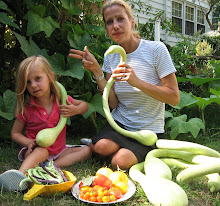To my recollection, there was not a lot of flat fish featured in “On the Line.”
 So once at home, I resurrected a nearly forgotten treasure, my Eric Ripert-signed copy of The Le Bernardin Cookbook. Copyright 1998 [my edition is 2001], you can really see the difference between what was produced at the restaurant – wow – 11 years ago versus what is done today: more classic French with a twist then, a lot of Asian influence now. And that’s to be expected. It’s evolution. Tastes and sensibilities change across all industries over both short and long periods of time. Trends, however, are hardly more apparent anywhere else than with food.
So once at home, I resurrected a nearly forgotten treasure, my Eric Ripert-signed copy of The Le Bernardin Cookbook. Copyright 1998 [my edition is 2001], you can really see the difference between what was produced at the restaurant – wow – 11 years ago versus what is done today: more classic French with a twist then, a lot of Asian influence now. And that’s to be expected. It’s evolution. Tastes and sensibilities change across all industries over both short and long periods of time. Trends, however, are hardly more apparent anywhere else than with food.But the classics never die, and that’s the treatment I executed with the sole. The only additional ingredient I needed to pick up was the endive. Otherwise, everything else was on hand. And the “classics with a twist” spicing was surprising and ultimately a good departure. The spice combination is something I would put together again, perhaps in another dish. The coriander seeds, fresh ground in the mortar & pestle, were quite fragrant and once cooked, lemony. A harbinger of Spring.
Spice Sole with Braised Endive
For the Endive:
4 Endive, halved lengthwise
4T butter
sea salt & white pepper
ginger, coriander, cinnamon, sugar
chicken stock or canned broth
lemon juice
S&P the cut sides of the endive. Place cut sides down in a pan w/butter scattered atop. Sprinkle w/spice. Add stock and braise in 450 oven.
For the Sole:
4 6-oz gray or Boston sole fillets, skinned (I used 6 – I wanted leftovers)
star anise, coriander, ginger, all ground; pinch cayenne
sea salt & white pepper
corn oil, lemon juice, butter & parsley
Season skin side of fish fillets. Sauté seasoned side down, 2 mins. Add butter to pan & sauté further; remove from pan. Add remaining spice mixture & lemon to pan. S&P to taste. Pout over fish and serve w/endive overlapping.
[Copyright law restricts a full reprint of the recipe. This is a good appetizers-to-desserts book, which you could probably pick up online at less than my hardcover price. A nice addition to any collection, signed or not.]
If I can find Escolar (what they call white tuna), I’m doing the “On the Line” treatment. Red wine Béarnaise? I’ve got to try that. Maybe I’ll just get tuna steaks next week and give it a go. But where in the heck am I going to get sea beans?










